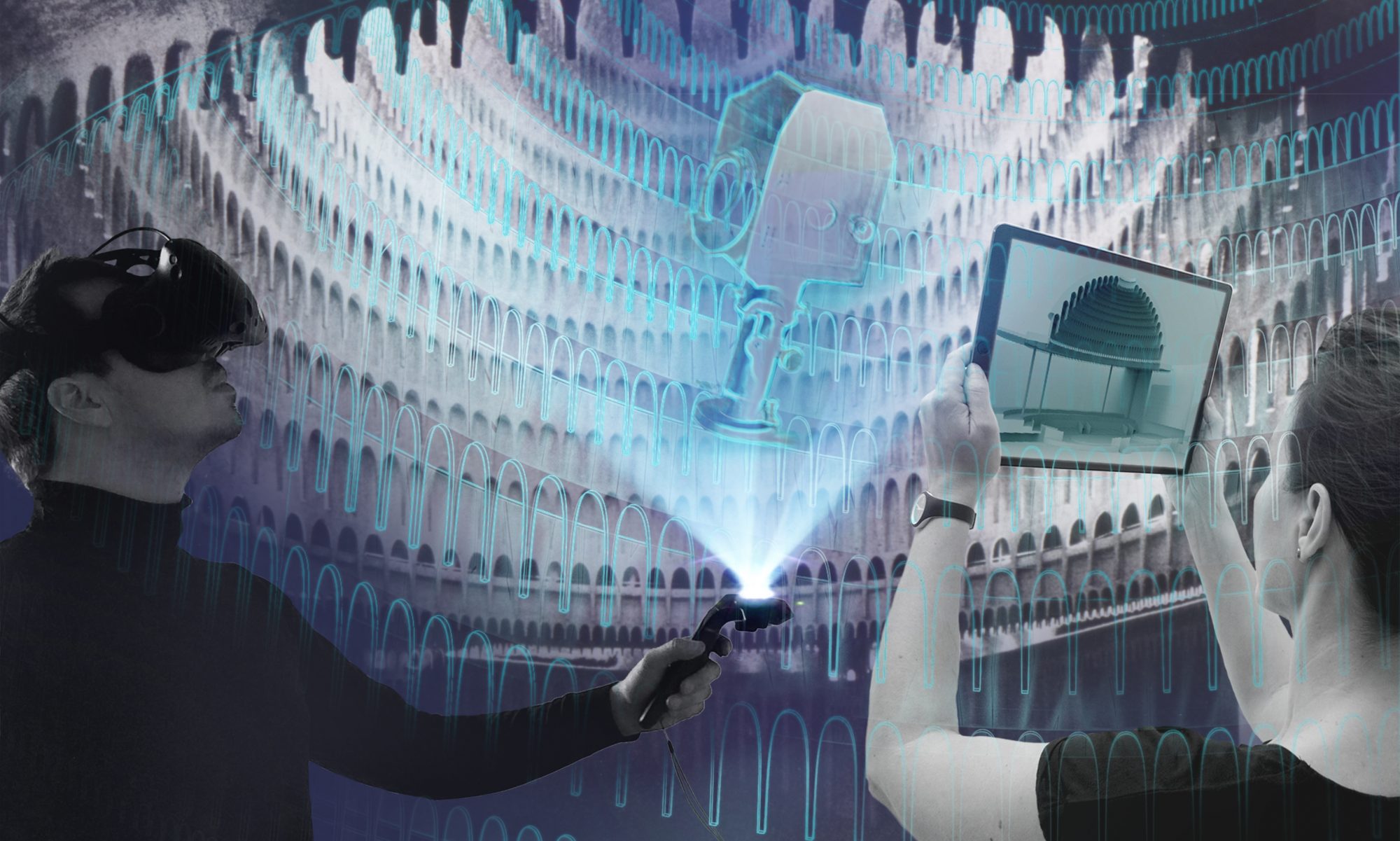For a long time, game engines were exactly what their name suggests: the engines that drive the functioning of computer games “under the hood”. Because the demands of interactive and multimedia applications are very similar to those of computer games in other areas as well, these game engines are increasingly being used there as well.
In addition to their function as the sub-engine of modern computer games, game engines are also the development environment in which applications are programmed and assembled: They are tools for processing various types of control input (e.g., from VR controllers), 3D data (architectures and objects), and media (sound and video), and are used for playout – based on a programmed logic – to various end devices (VR glasses, tablets, game consoles). And this is exactly why they are also suitable for the production of interactive, transmedia, virtual or augmented art and media and theater productions. Game engines are both development environments and universal interfaces between media, formats and technologies.

While professional game engines were originally reserved for large game developers, the freely available game engines are now in no way inferior to the extremely high-priced proprietary systems. The best known and most widespread representatives of the freely accessible game engines are Unreal Engine and Unity 3D. For both, there are many free introductory tools, even for beginners, and both are fully suitable for the development of VR and AR applications – but have different focuses. While the main focus of Unreal Engine is on a very high visual quality, Unity 3D scores with a high flexibility in terms of programming and interfaces.
Both game engines are in fierce competition and are constantly being developed further. Especially with the Unreal Engine, the range of functions of the program grows in almost monthly succession.
For advocates of the open source idea, the game engine Godot could also be interesting. The open source development environment gives users a lot of freedom and the possibility to redesign the software according to their own requirements.
Besides the fully functional game engines, there are other software environments that enable the creation of VR experiences. For example, Spoke for Mozilla Hubs is a popular entry point for learning how to use and design virtual spaces. Simlab Composer simplifies the creation of virtual training simulations and interactive product presentations.

User interface of SimLab Composer
Unity3d: https://unity.com
Free (to a certain extent) game engine with an easy-to-use user interface and a high degree of customizability.
Unreal Engine: https://www.unrealengine.com/
Free (to a certain extent) game engine with a very high rendering quality. The visual node-based scripting interface Blueprints is mainly aimed at designers.
Godot Engine: https://godotengine.org/
Free and open source game engine.
Spoke für Mozilla Hubs: https://hubs.mozilla.com/spoke
Web-based free editor for Mozilla Hubs scenes.
SimLab Composer: https://www.simlab-soft.com/
Standalone paid program for creating and visualizing interactive models for VR. Ability to render 360 degree images and tours from virtual models.
Author: Pablo Dornhege


